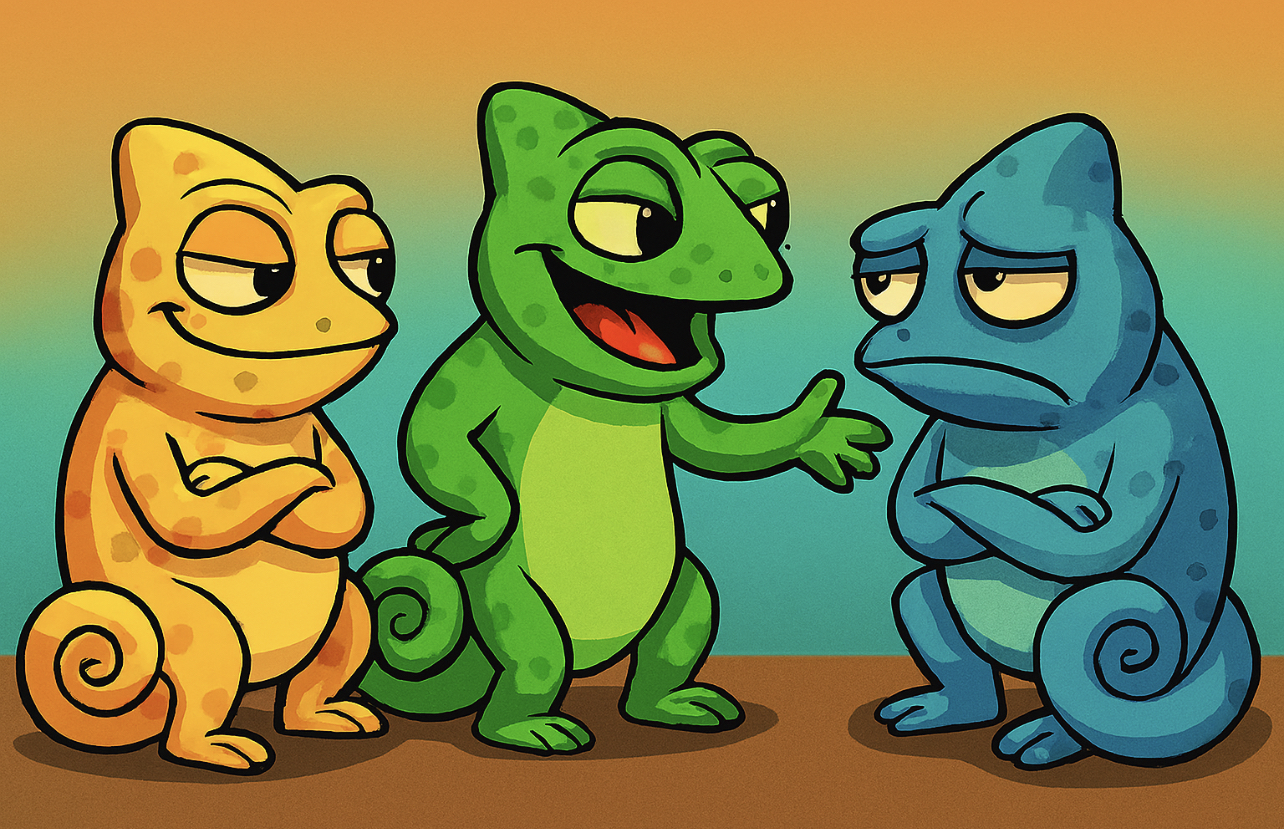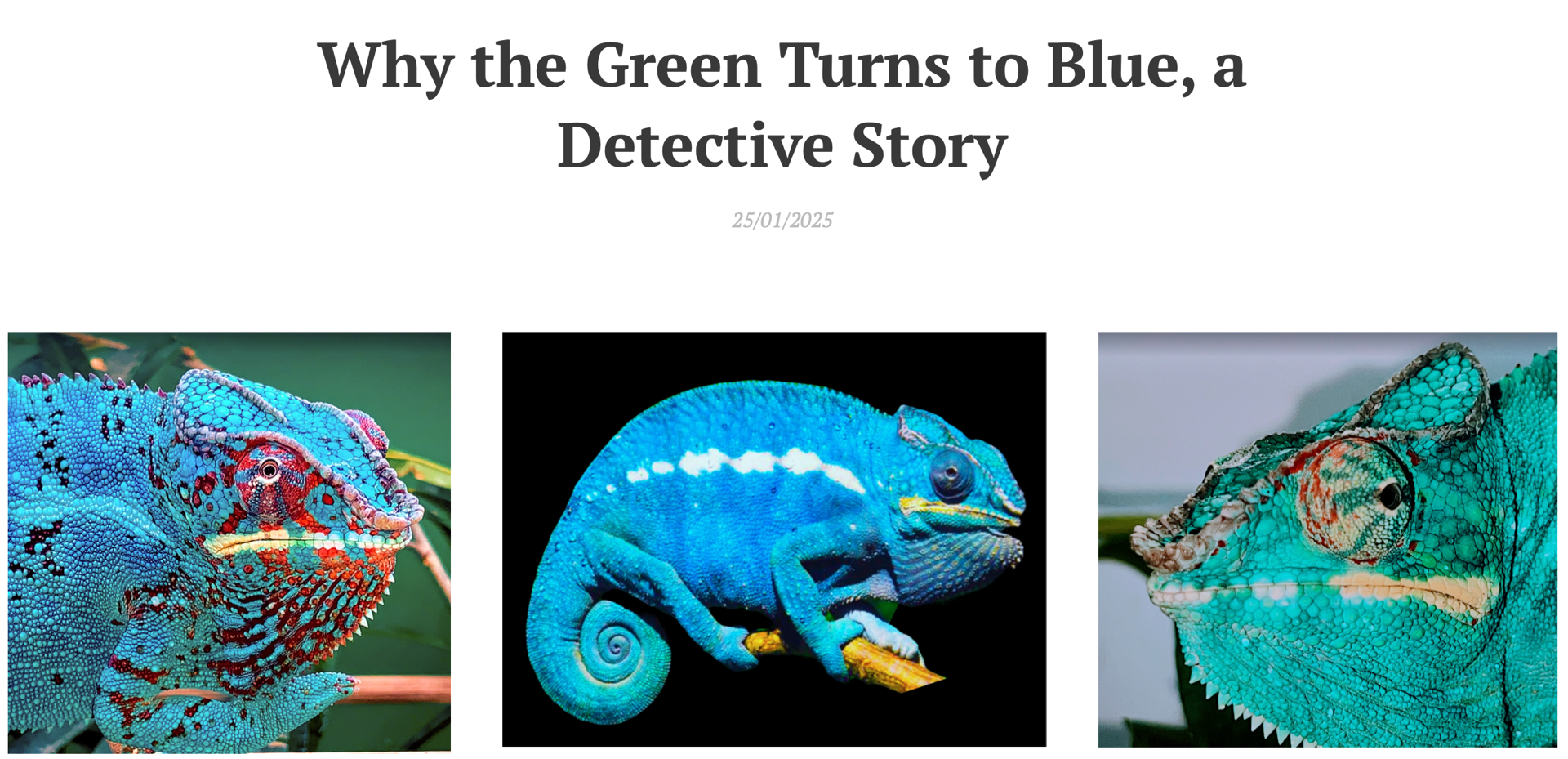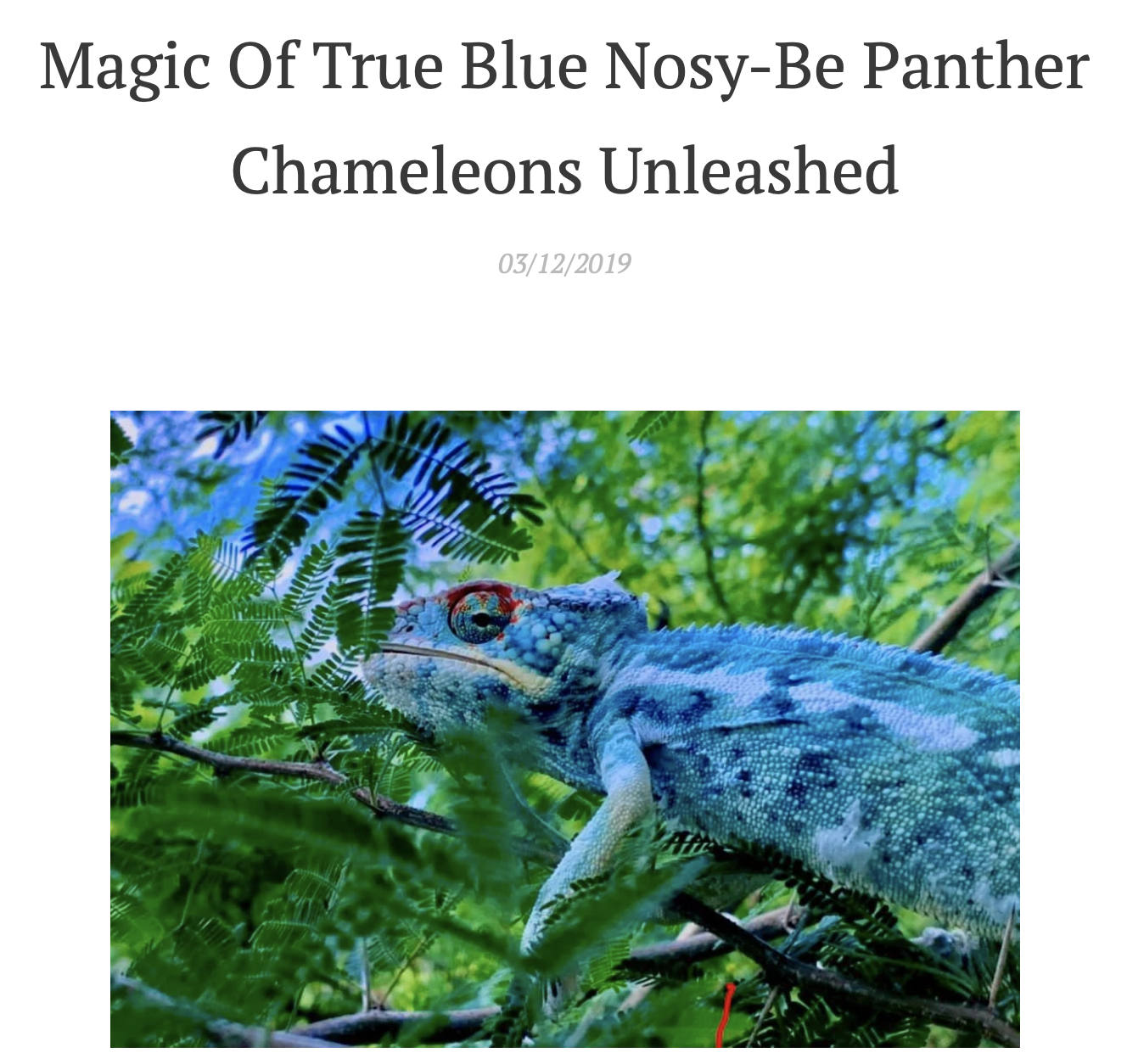Myth 54: “True Blue Nosy Be Is a Breed or Breeding Line”

The Myth: Many enthusiasts believe that the vivid blue coloration seen in some Nosy Be panther chameleons represents a distinct breed or selectively bred lineage — often marketed as "True Blue." This belief is widespread in the pet trade and among breeders.
The Reality: The "True Blue" appearance is not a genetically fixed trait. It is a reversible condition caused by dietary pigment loss and environmental factors, not selective breeding. In fact, the blue coloration often signals nutritional deficiency, especially in captive populations.
What Nosy Be Chameleons Look Like in Nature
In the wild, Nosy Be panther chameleons are typically emerald green, sometimes with turquoise or teal hues.
Blue individuals are rare and usually appear in degraded habitats or among older or stressed animals.
The green coloration is a result of structural blue light combined with yellow pigments — primarily carotenoids and pteridines.
Why Green Turns to Blue
Chameleons produce green by layering yellow pigments over structural blue.
When yellow pigments are lost or deficient, the underlying blue becomes dominant.
This pigment loss is not genetic — it's caused by poor diet, lack of natural sunlight, and missing prey diversity.
The Role of Diet
In the wild, chameleons consume pollinators like bees and wasps, which carry pollen rich in carotenoids.
These pigments are essential for producing yellow, orange, and red tones.
Captive diets often lack these prey types, leading to pigment starvation and a shift toward blue coloration.
Environmental Influence
Chameleons kept under artificial lighting or in low-UV conditions show faster pigment loss.
Even in the wild, areas with monoculture plantations and reduced insect diversity show more blue individuals.
The "true blue" effect is thus a symptom of environmental degradation, not a desirable trait.
Why It's Not a Breeding Line
Breeders may claim to have "true blue" lines, but this is misleading.
The blue coloration is not heritable in the way morphs or genetic traits are.
It's a nutritional artifact — and in some cases, a sign of malnourishment or long-term pigment depletion.
Final Thought
The "True Blue Nosy Be" is not a breed, morph, or stable genetic line. It's a visual symptom of pigment loss caused by poor diet and artificial conditions. Promoting it as a desirable trait without understanding its biological roots risks perpetuating poor husbandry and harming animal welfare.
If you want a healthy Nosy Be, aim for emerald green
— that's the color of a well-fed, well-kept chameleon.

